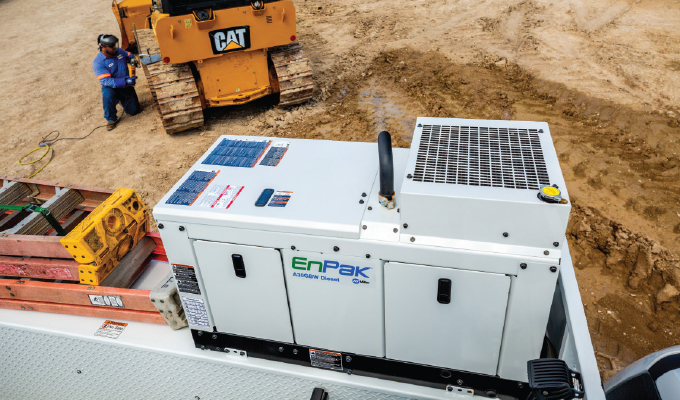By Matt Sherrick
What challenges impact the productivity of your work truck fleet? Unexpected maintenance, nonproductive idle time, and excess fuel usage all cost time and money. A telematics system provides data that can help you get to the bottom of these issues and many others. With growing pressure to optimize fleet utilization, telematics-equipped vehicles are becoming the industry norm. However, when telematics solutions don’t include a vehicle’s power system (or equipment), you get an incomplete picture of performance and usage.
How can telematics improve productivity?
Telematics allow fleet managers to capture and analyze meaningful data about a fleet’s operation—information that can be used to improve productivity, reduce downtime, and save money.
Measuring engine runtime and idle time can help you track where fuel is being used—or wasted—to help improve fuel economy and emissions. Monitoring a technician’s route between jobs can help you optimize routes and scheduling, to reduce overall miles driven and save time and fuel.
Knowing how many miles—and what type of miles—a truck is logging every day helps you spot potential performance problems and schedule preventive maintenance at the most convenient times.
ALL-IN-ONE CONNECTS TO TELEMATICS
You have an even greater ability to make data-driven decisions that improve fleet performance and efficiency when work truck power systems communicate with the truck’s telematics system.
The EnPak® A30GBW, EnPak A60HGE, and EnPak A60GE all-in-one power systems from Miller Electric Mfg. LLC are CAN bus-enabled systems that connect with the vehicle’s telematics. This connectivity delivers real-time data on the EnPak engine’s health, including the air compressor, and provides system error codes, service alerts, and more as part of the truck’s total telematics report.

This information allows you to proactively schedule maintenance and track change management. This data is also a good way to compare idle time, fuel usage, and other information for PTO-driven equipment versus an all-in-one power system—to help justify purchasing decisions for the fleet.
TAKE IDLE OFF YOUR TRUCK
Connecting to telematics isn’t the only way an all-in-one power system helps reduce downtime and improve productivity for work trucks. Reducing truck idle hours can significantly reduce downtime for maintenance and repairs.
A Tier 4 Final-compliant truck engine uses a diesel particulate filter (DPF) to trap soot from engine exhaust gases. This filter must be periodically cleaned through regeneration to maintain emissions reduction performance and fuel efficiency. The more a diesel truck engine idles, the more often the DPF must be cleaned.
Unlike PTO-driven equipment that requires the truck engine to idle to power tools, engine-driven all-in-one systems deliver compressed air, generator power, battery charging/crank assist, welding capabilities, and the power to support 12-volt DC needs—all with the truck engine turned off.
The EnPak A30 power system can reduce truck engine idle time by up to 75 percent. This dramatically reduces maintenance costs and fuel consumption, increases productivity, and lowers the risk of downtime caused by DPF failures, regenerations, and other truck engine-related problems.
BETTER FLEET MANAGEMENT
A work truck that’s down isn’t productive or profitable. Maximizing the productivity and efficiency of a work truck fleet starts with choosing reliable equipment and tools that help reduce downtime—so service technicians are ready for anything.
An all-in-one power system that connects to a work truck’s telematics delivers the power technicians need while also providing access to important data that can help identify potential problems. Tracking and analyzing information related to performance, idling, and upcoming service intervals helps you find time and cost savings in the operation—so you can better manage the fleet.
For more information
Matt Sherrick is the product manager of the Power Systems Division at Miller Electric Mfg. LLC. For more information, visit www.millerwelds.com.
Modern Contractor Solutions, June 2019
Did you enjoy this article?
Subscribe to the FREE Digital Edition of Modern Contractor Solutions magazine.



